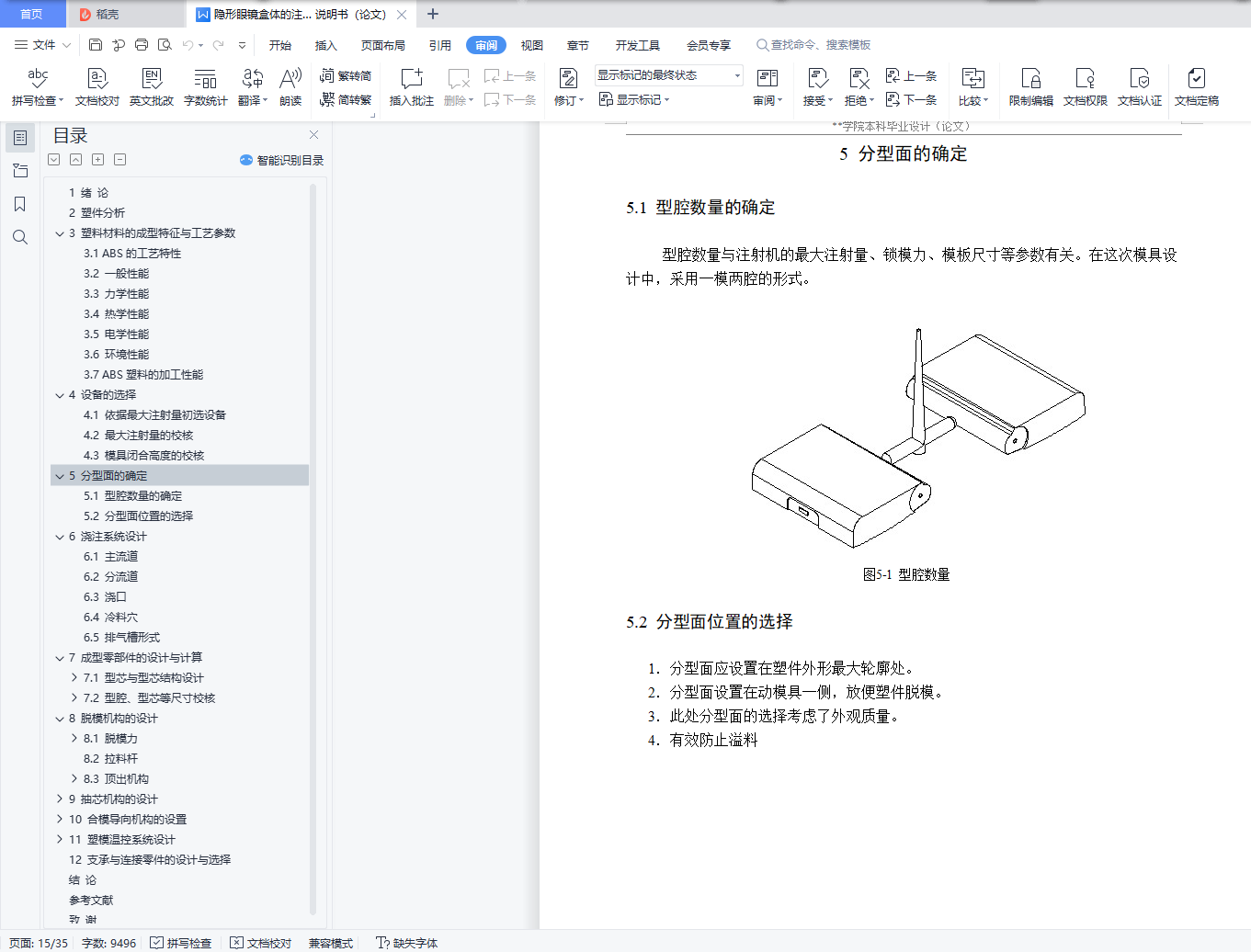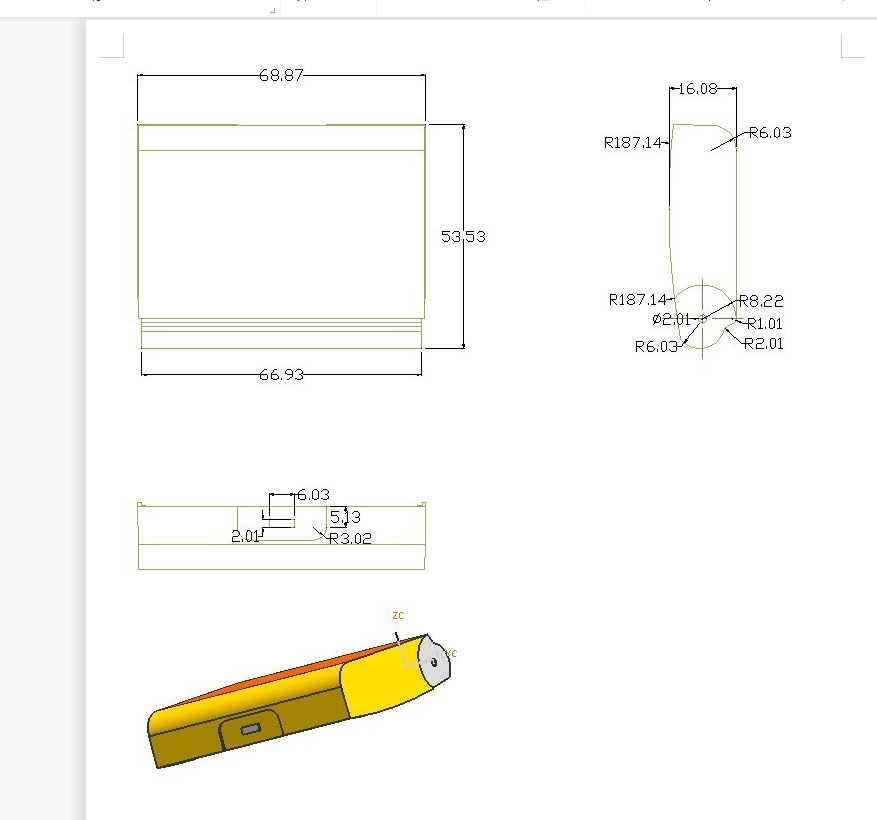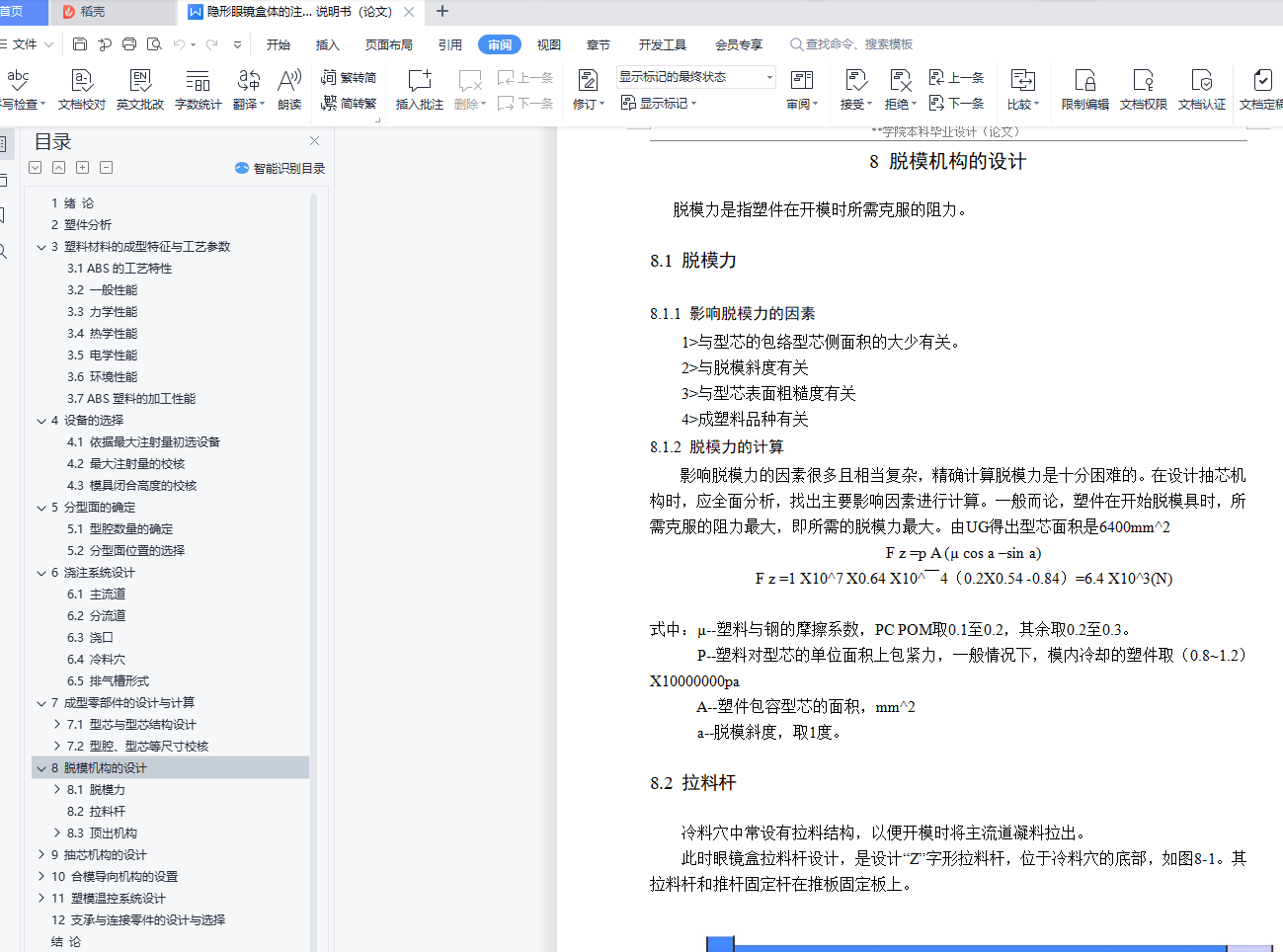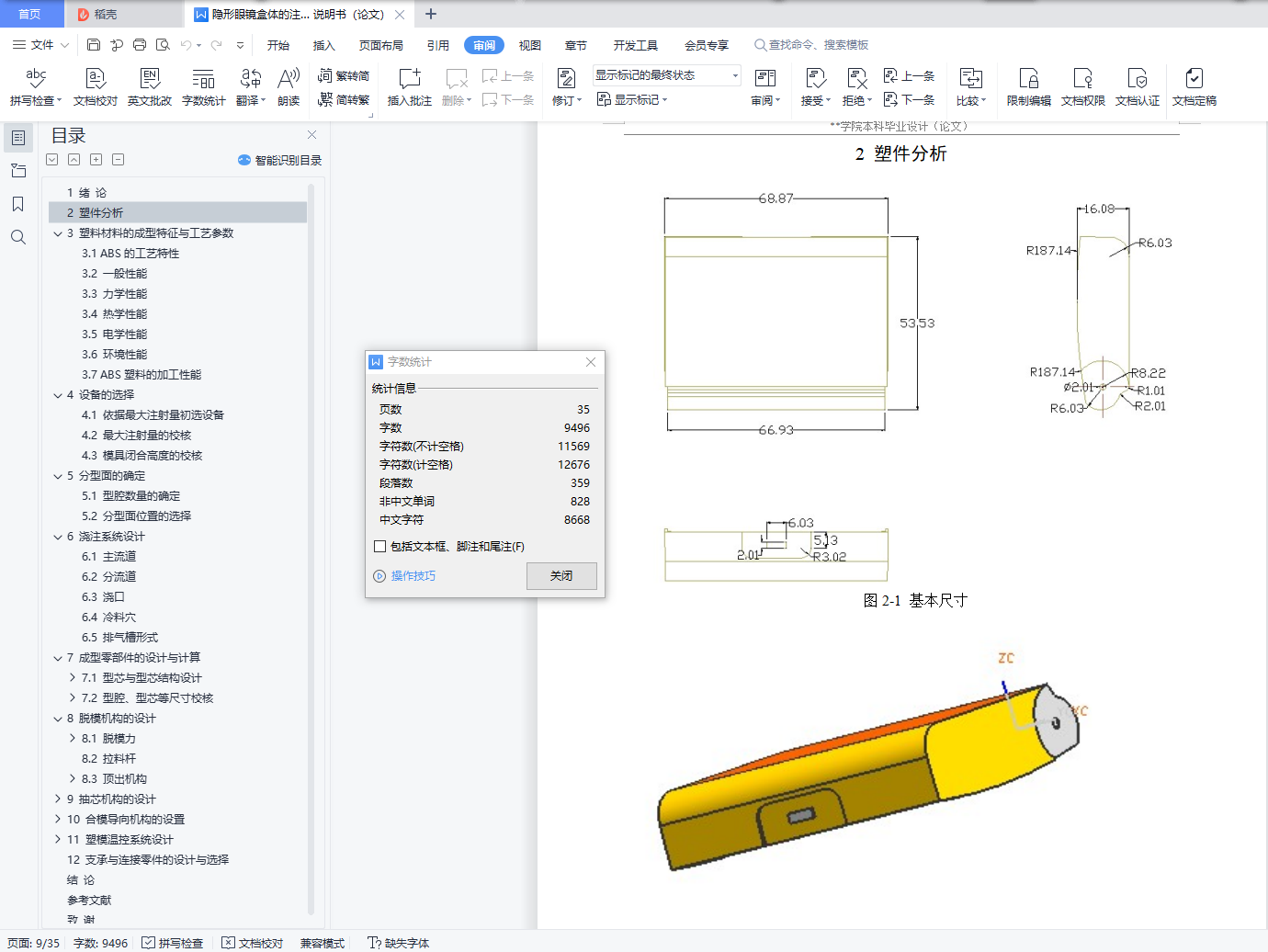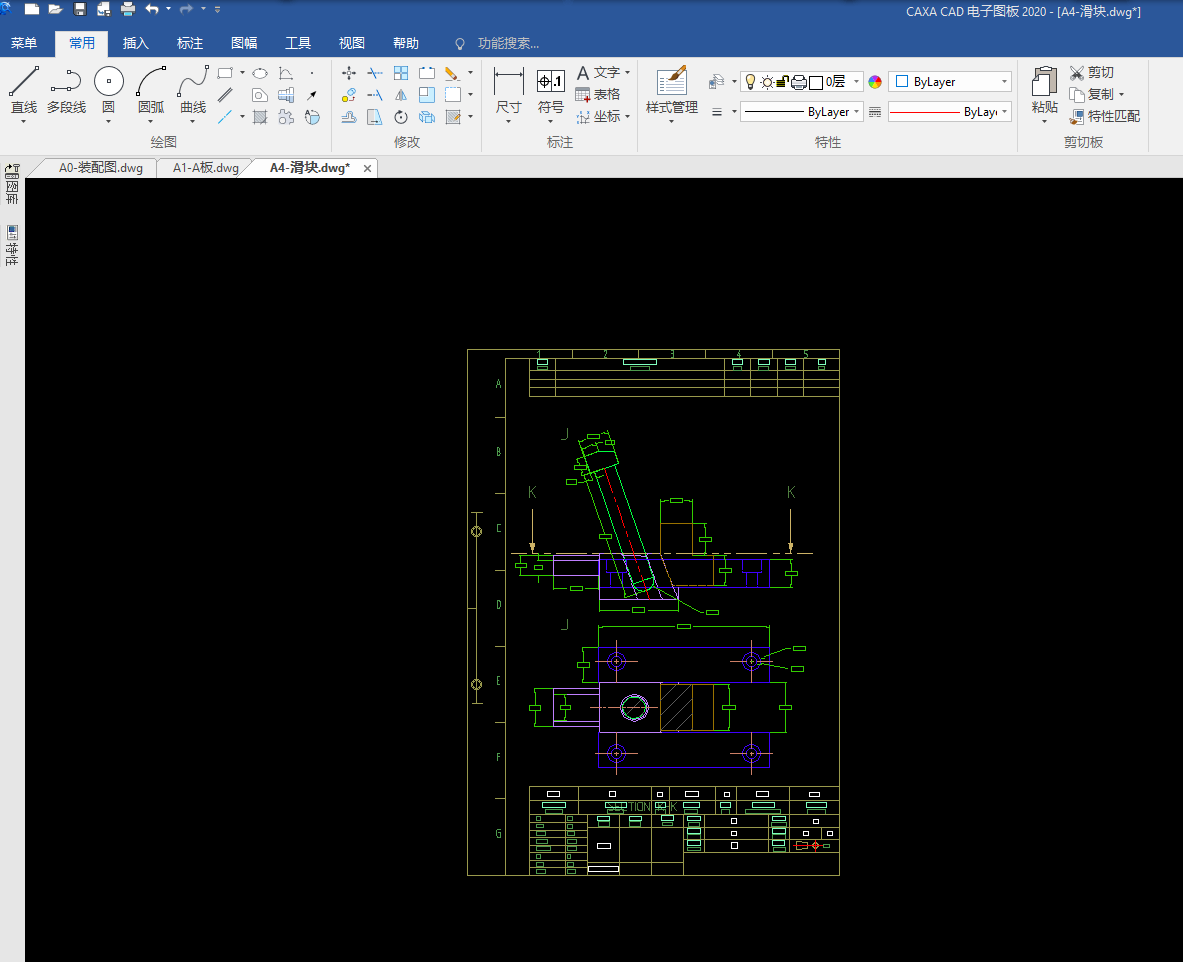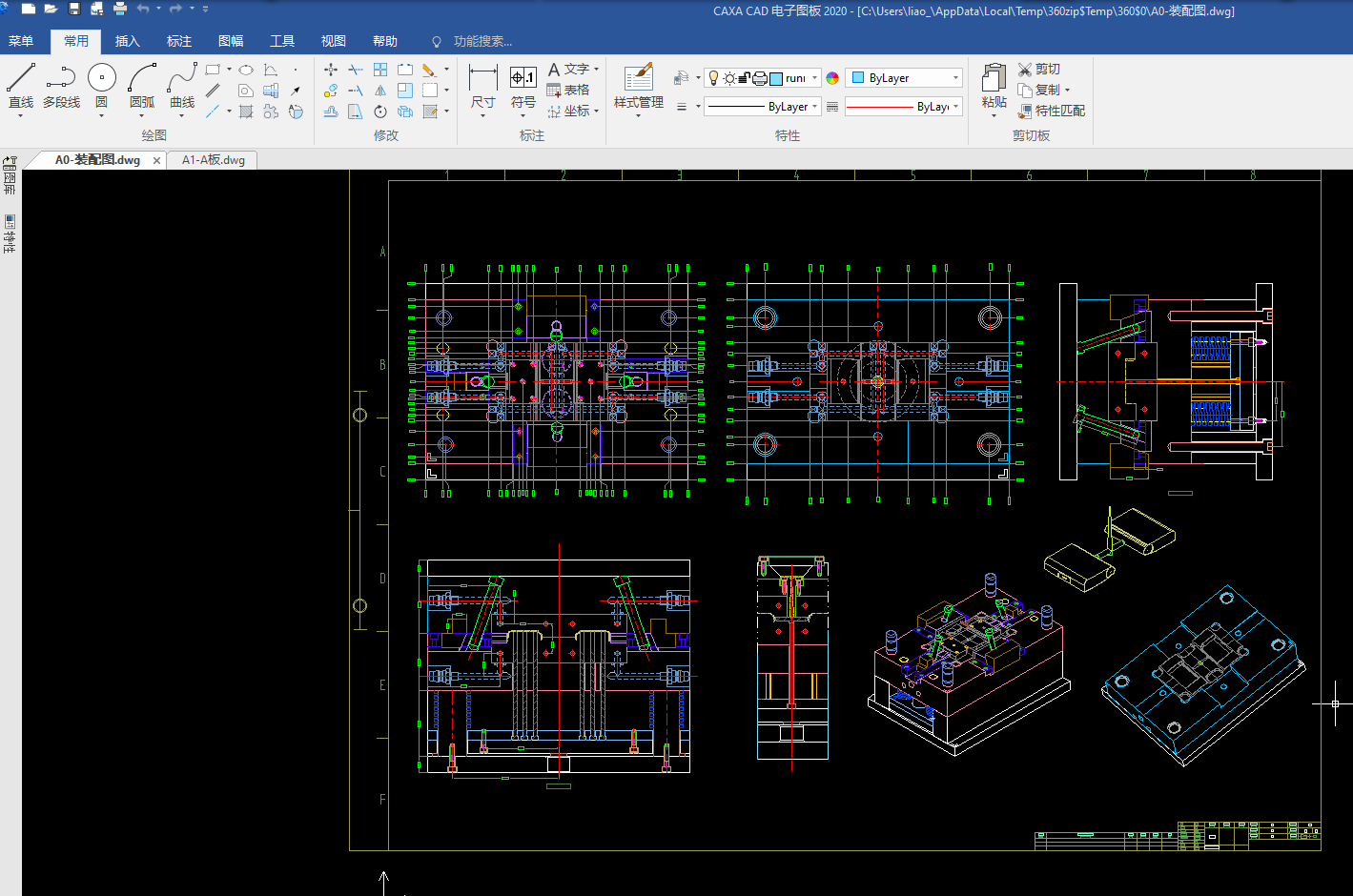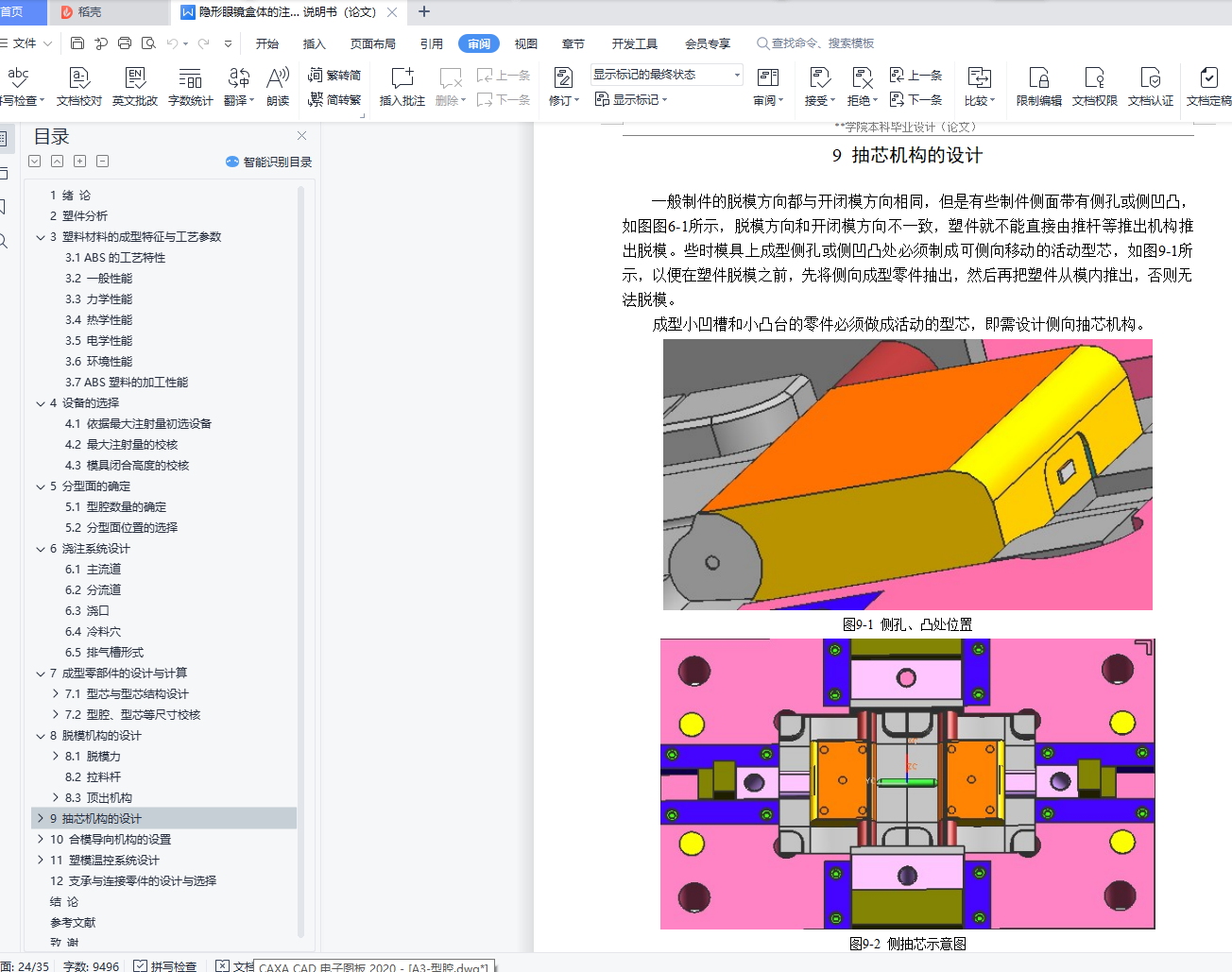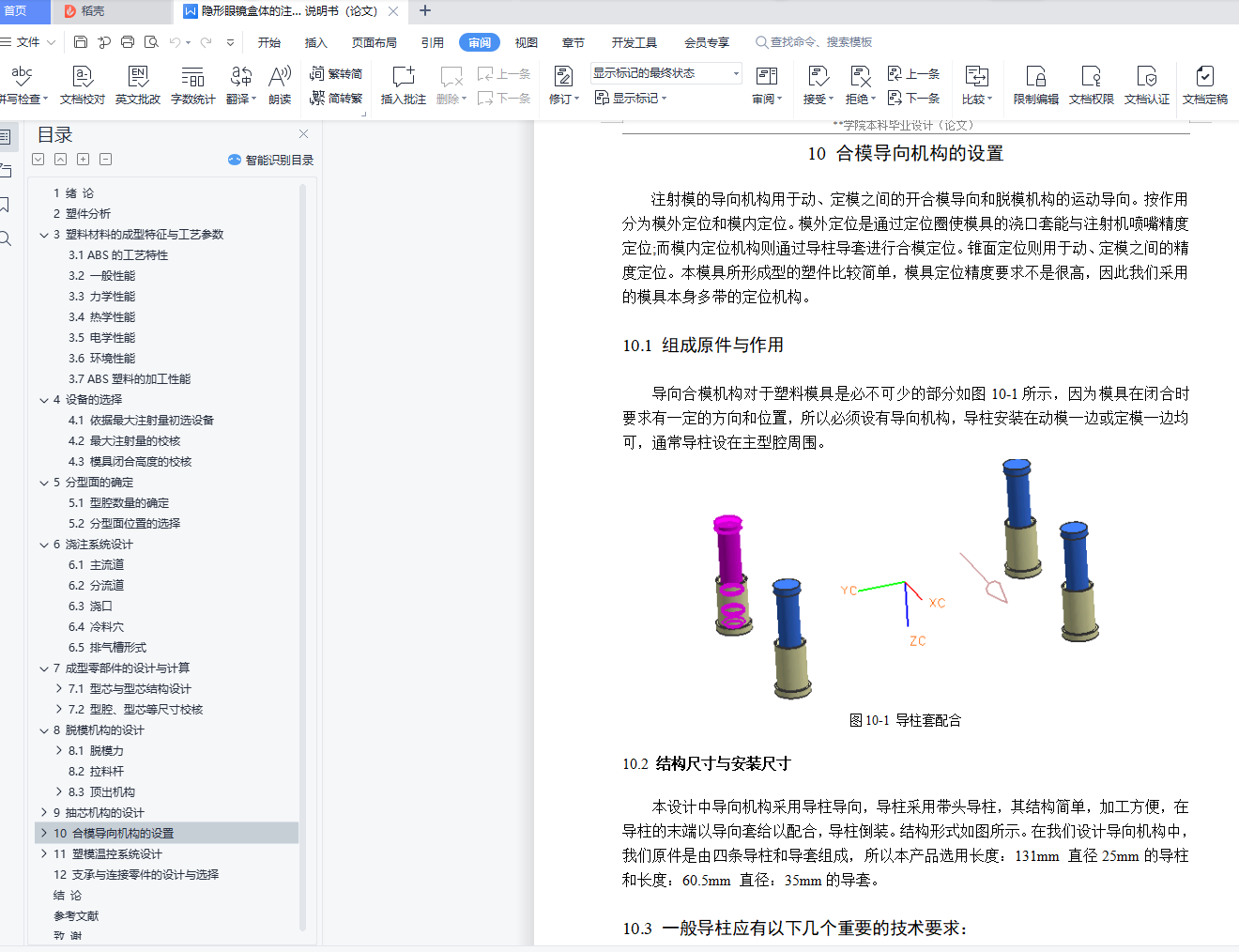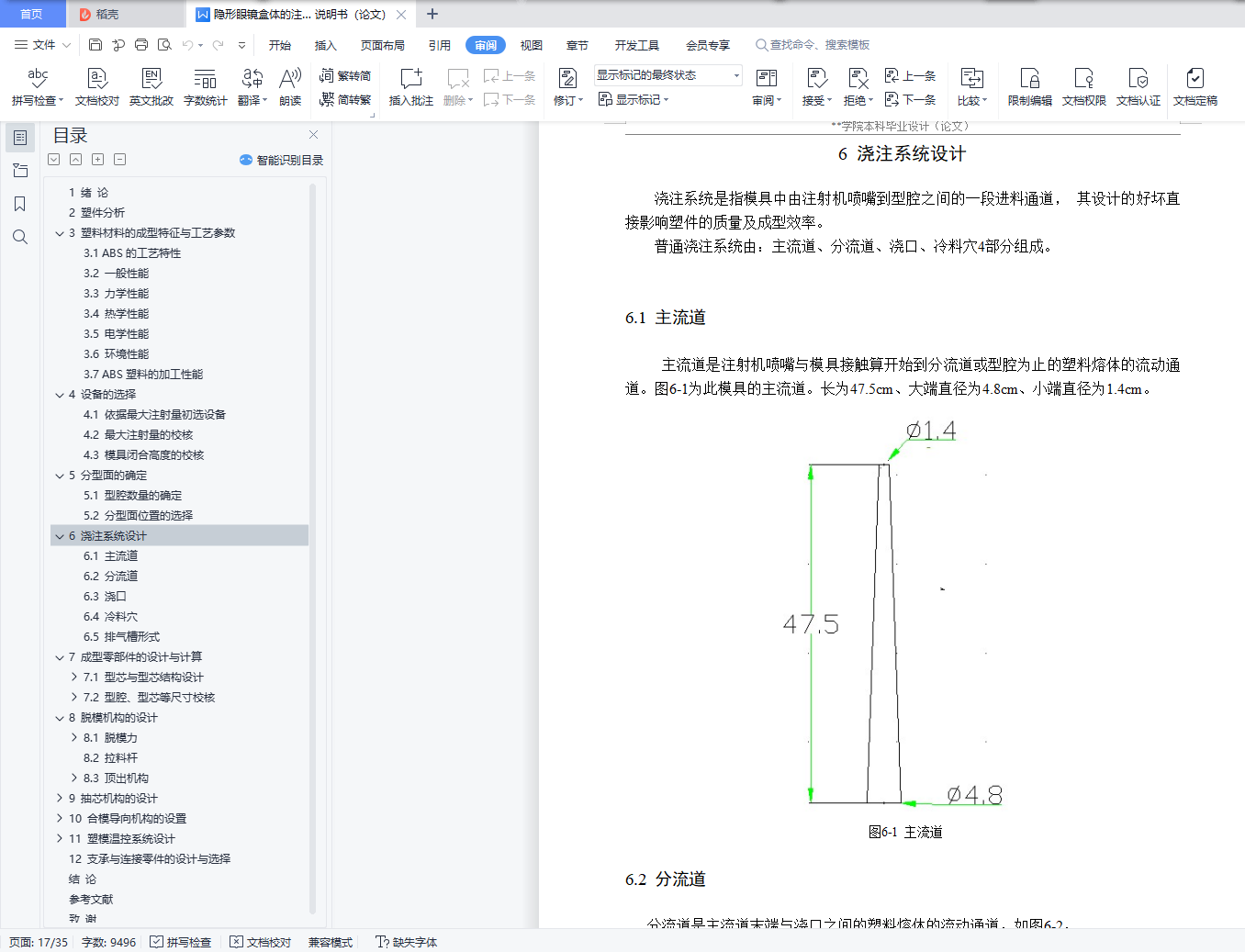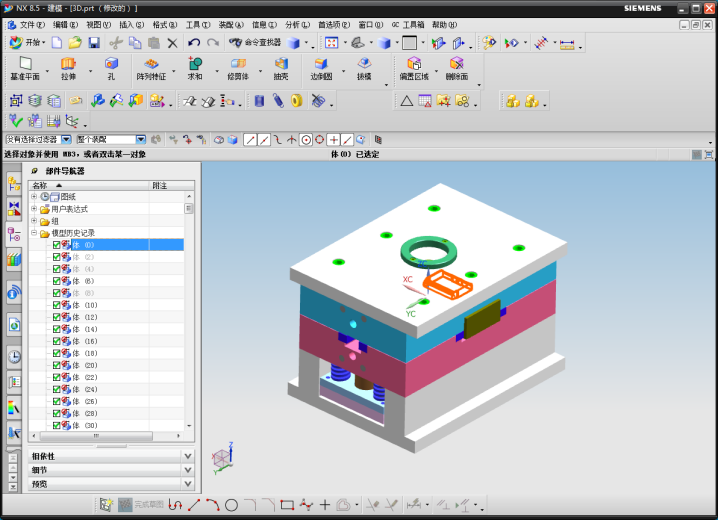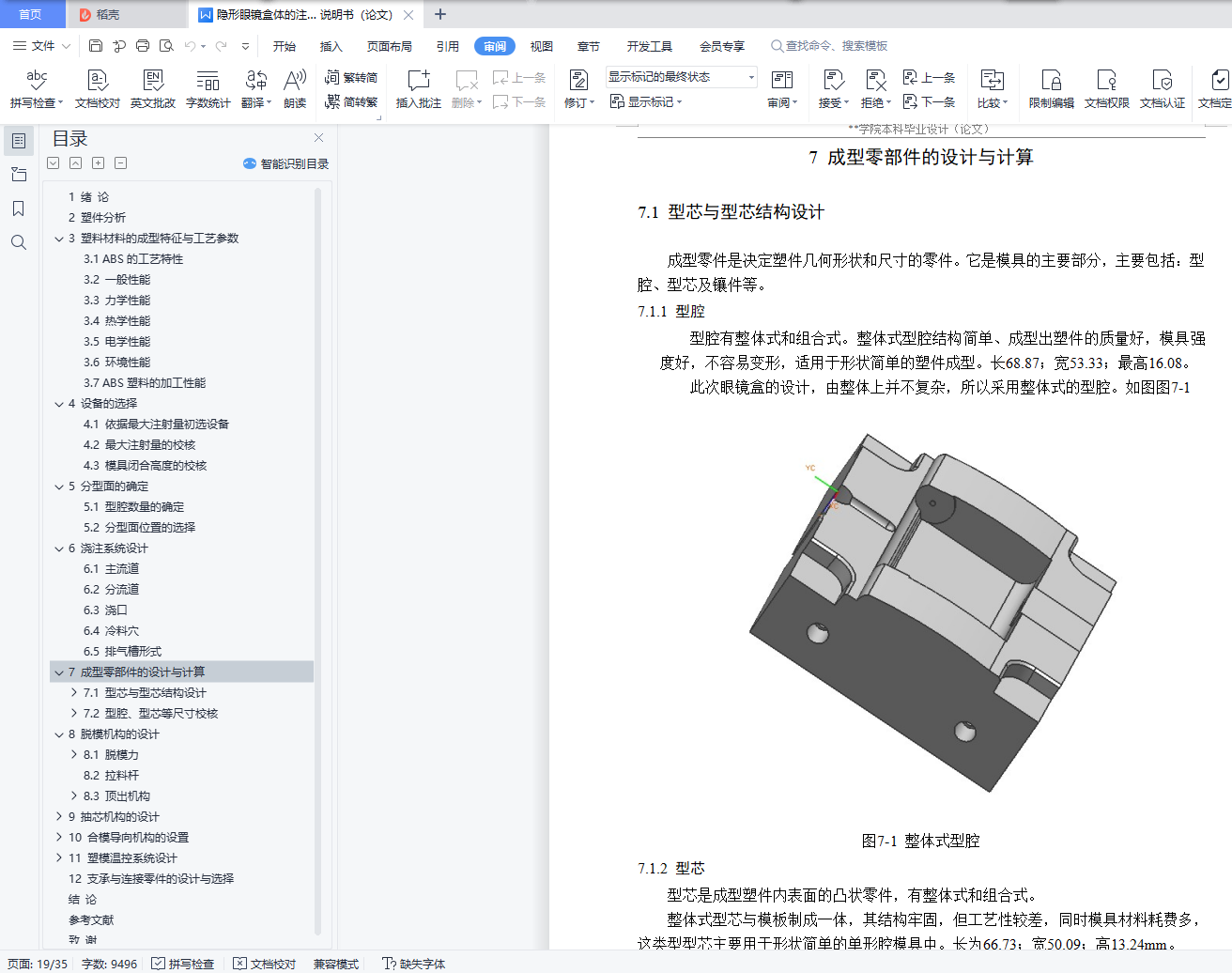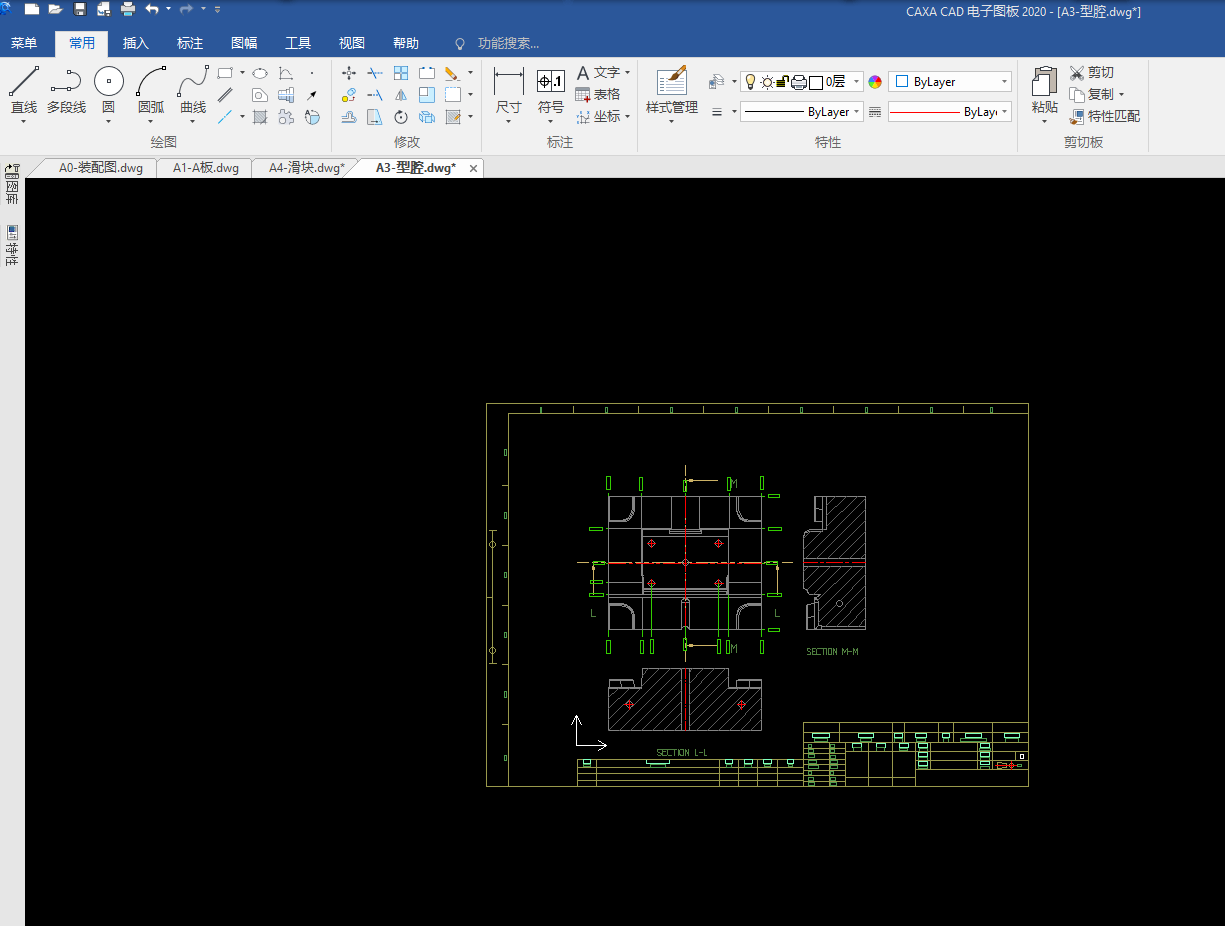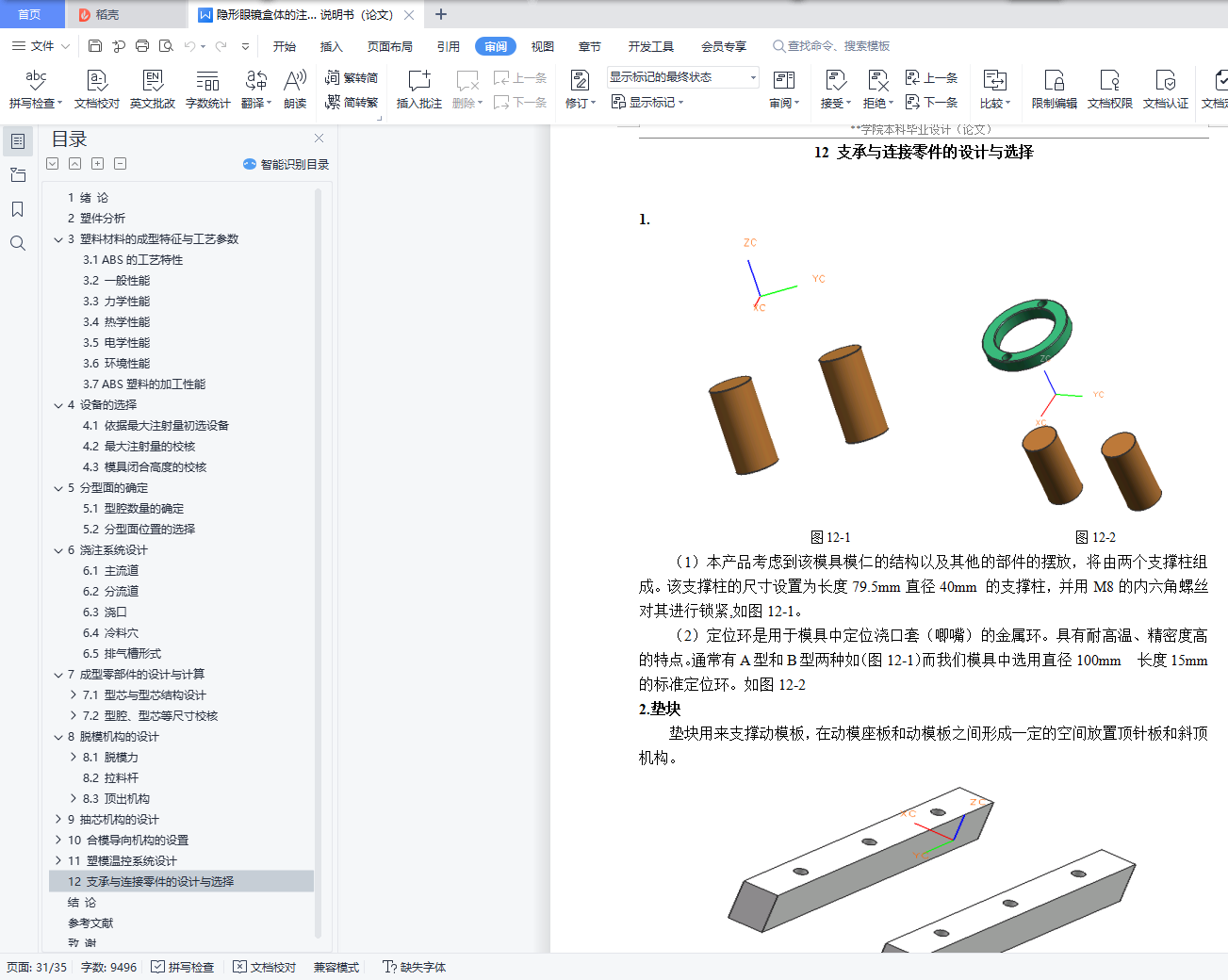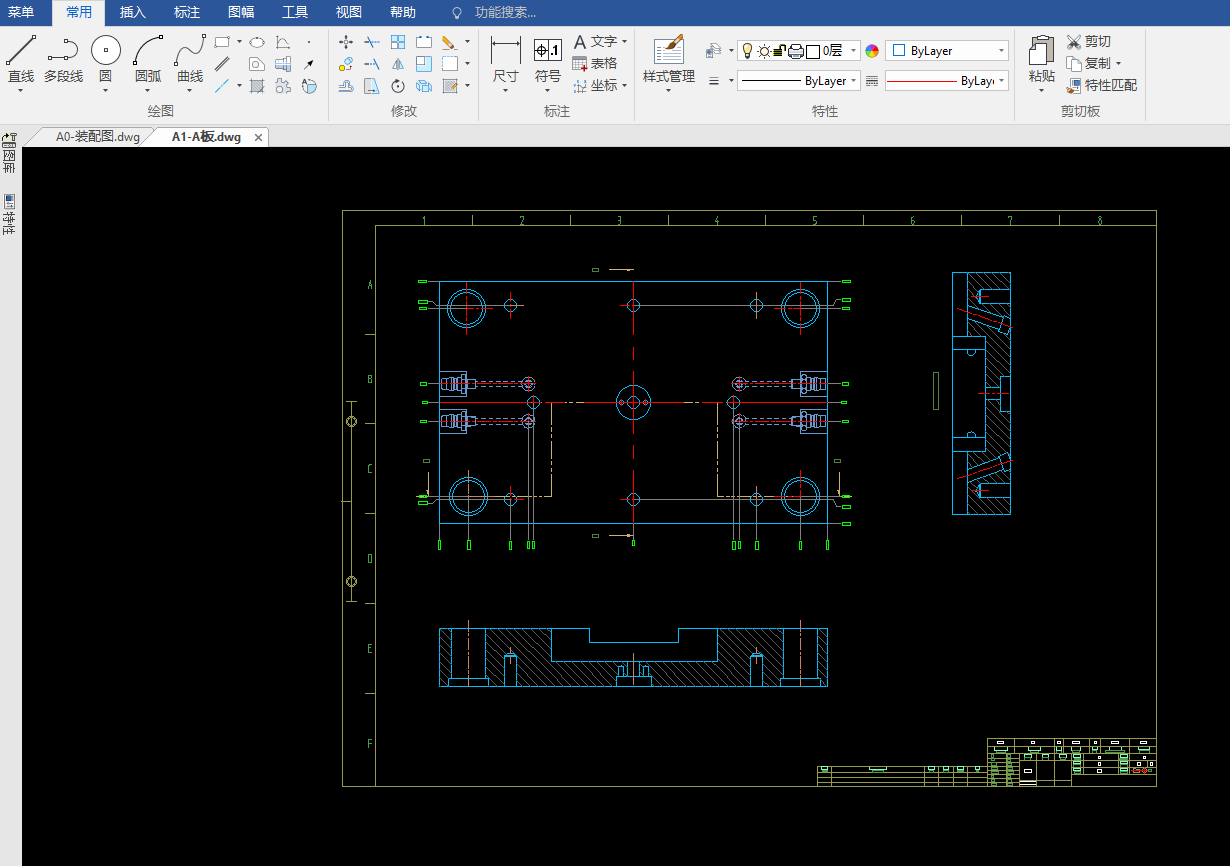隐形眼镜盒体的注塑模设计
专业:交通运输 学 号:201610111120
学生:张三 指导教师:李四/王五
摘要:此次眼镜盒的设计,从开始确定产品到最后完成都严格按照毕业说明书内容要求进行。第一是对所要设计的产品进行分析、测量,然后查阅相关资料确定使用的材料和性能,然后用UG画出产品实体,并用UG分析产品的合理性。
第二根据实体模具型对零件进行结构分析,确定整个注塑循环系统,包括基本模架、开模具行程,开模、复位机构,冷却系统等基本参数,对具体结构零件分析计算。用UG对模具的型腔、型芯及其它零件进行三维造型,对其进行实体装配。
第三,用CAD绘制平面装配图及相关的零部件。本次设计的难点在于侧抽芯机构。最后编写一份说明书,对之前所做产品、工件步骤进行说明、计算。
关键词:眼镜盒模具;UG;侧抽芯
Design of Injection Mould for Contact Lens Box
Major:Mechanical Manufacture and Automation Student ID:201510111120
Student:Zhang San Instructor:Li Si/Wang Wu
Abstract:The design of the glasses box, from the beginning to the final completion of the product are strictly in accordance with the requirements of the graduation instructions. The first is to analyze and measure the products to be designed, then consult the relevant data to determine the materials and properties used, then draw the product entity with UG, and analyze the rationality of the products with UG.
Secondly, the structural analysis of the parts is carried out according to the solid mold type, and the whole injection cycle system is determined, including the basic parameters such as the basic mold frame, the opening stroke, the opening die, the reset mechanism, the cooling system and so on. A UG is used to shape the mold cavity, core and other parts in three dimensions and assemble them.
Third, use CAD to draw plane assembly drawings and related parts. The difficulty of this design lies in the side core pulling mechanism. Finally, a manual is prepared to explain and calculate the previous product and workpiece steps.
Keywords: glasses box mold; UG; side core pulling
目 录
1 绪 论
2 塑件分析
3 塑料材料的成型特征与工艺参数
3.1 ABS的工艺特性
3.2 一般性能
3.3 力学性能
3.4 热学性能
3.5 电学性能
3.6 环境性能
3.7 ABS塑料的加工性能
4 设备的选择
4.1 依据最大注射量初选设备
4.2 最大注射量的校核
4.3 模具闭合高度的校核
5 分型面的确定
5.1 型腔数量的确定
5.2 分型面位置的选择
6 浇注系统设计
6.1 主流道
6.2 分流道
6.3 浇口
6.4 冷料穴
6.5 排气槽形式
7 成型零部件的设计与计算
7.1 型芯与型芯结构设计
7.1.1 型腔
7.1.2 型芯
7.2 型腔、型芯等尺寸校核
7.2.1 型腔尺寸校核
7.2.2 型芯尺寸校核
8 脱模机构的设计
8.1 脱模力
8.1.1 影响脱模力的因素
8.1.2 脱模力的计算
8.2 拉料杆
8.3 顶出机构
8.3.1 顶出机构的设计原则
8.3.2 顶出机构的选择
8.3.3 推杆的固定
9 抽芯机构的设计
9.1 抽芯距的确定
9.2 斜导柱侧向分型与抽芯机构
10 合模导向机构的设置
10.1 组成原件与作用
10.2 结构尺寸与安装尺寸
10.3 一般导柱应有以下几个重要的技术要求
10.4作用
11 塑模温控系统设计
11.1 冷却系统的设计结构与尺寸
11.2 冷却装置系统的设计要点
12 支承与连接零件的设计与选择
结 论
参考文献
致 谢
